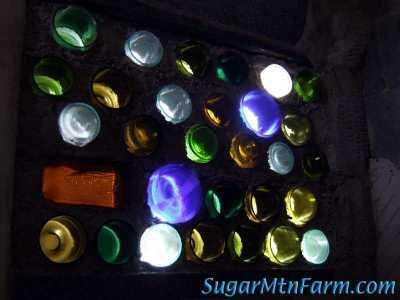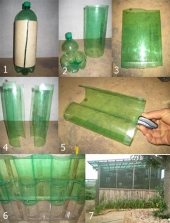
 4
4




http://citylivingnaturally.com
A sustainable approach to life in the city
 1
1





Idle dreamer




Sometimes the answer is not to cross an old bridge, nor to burn it, but to build a better bridge.
 1
1





Idle dreamer
 3
3








http://citylivingnaturally.com
A sustainable approach to life in the city




Buy Our Book! Food Web: Concept - Raising Food the Right Way. Learn make more food with less inputs
Off Grid Homesteading - latest updates and projects from our off grid homestead
 1
1




Never doubt that a small group of dedicated people can change the world, Indeed it is the only thing that ever has. Formerly pa_friendly_guy_here
 4
4




Buy Our Book! Food Web: Concept - Raising Food the Right Way. Learn make more food with less inputs
Off Grid Homesteading - latest updates and projects from our off grid homestead
 2
2





Our inability to change everything should not stop us from changing what we can.
 1
1





http://citylivingnaturally.com
A sustainable approach to life in the city








http://citylivingnaturally.com
A sustainable approach to life in the city
 1
1






 1
1





Our inability to change everything should not stop us from changing what we can.
 2
2




















 2
2














Freakin' hippies and Squares, since 1986




Freakin' hippies and Squares, since 1986
 1
1




"If you want to save the environment, build a city worth living in." - Wendell Berry
 1
1








 1
1










The surface of glass bottles can be roughened to create a better surface for adhesion by treating them with phosphoric acid.




Freakin' hippies and Squares, since 1986




 3
3





 2
2




 Even if the bottle is removed from the waste stream, the energy to make a new one is still much less than the brick.
Even if the bottle is removed from the waste stream, the energy to make a new one is still much less than the brick.




 While i'm not refuting those figures on costs of manufacture (BTU's) they do not factor in the mining the and acquisition of new materials, I live 2 hours drive from "Portland" where "Portland" cement actually originated... they also have 2 coal power stations nearby ... In-which a brick making company is making bricks from the fly-ash ...And Australia is one of the largest exporters of Bauxite (Alumina)..... I would like point out though that the figures you have linked only point to cost of manufacture , not cost of sourcing nor cost of transport nor the footprint left behind from doing so , Clay is usually sourced on site and therefore a lot more economical than whats stated in those links , Silica largely trucked in.. I 100% agree that there is a 30% power saving from recycled glass in heat value , but also glass and aluminium can be recycled an indefinite amount of times and transport costs are greatly reduced as they come for the consumers who have disposed of them..... and close to it's redistribution point .... thus increasing energy savings an environmental costs.....
While i'm not refuting those figures on costs of manufacture (BTU's) they do not factor in the mining the and acquisition of new materials, I live 2 hours drive from "Portland" where "Portland" cement actually originated... they also have 2 coal power stations nearby ... In-which a brick making company is making bricks from the fly-ash ...And Australia is one of the largest exporters of Bauxite (Alumina)..... I would like point out though that the figures you have linked only point to cost of manufacture , not cost of sourcing nor cost of transport nor the footprint left behind from doing so , Clay is usually sourced on site and therefore a lot more economical than whats stated in those links , Silica largely trucked in.. I 100% agree that there is a 30% power saving from recycled glass in heat value , but also glass and aluminium can be recycled an indefinite amount of times and transport costs are greatly reduced as they come for the consumers who have disposed of them..... and close to it's redistribution point .... thus increasing energy savings an environmental costs.....














Success has a Thousand Fathers , Failure is an Orphan
LOOK AT THE " SIMILAR THREADS " BELOW !





I want to build a tromb wall and wonder if they would be suitable
So what is the thermal gain on a glass bottle wall?
but the airspace in the glass bottle itself will not act as a thermal mass in the same way as the glass in the bottle.Glass, cob and brick are very similar in their ability to store heat.
 The glass bricks would be more in line with what Dale said in the quote, in my opinion, since this is solid glass, but a few bottles should not take a great deal away from the thermal potential of a traditional otherwise solid Trombe wall.
The glass bricks would be more in line with what Dale said in the quote, in my opinion, since this is solid glass, but a few bottles should not take a great deal away from the thermal potential of a traditional otherwise solid Trombe wall.
"Never doubt that a small group of thoughtful, committed citizens can change the world; indeed, it's the only thing that ever has."-Margaret Mead "The only thing worse than being blind, is having sight but no vision."-Helen Keller


















"Never doubt that a small group of thoughtful, committed citizens can change the world; indeed, it's the only thing that ever has."-Margaret Mead "The only thing worse than being blind, is having sight but no vision."-Helen Keller





|
Message for you sir! I think it is a tiny ad:
The new permaculture playing cards kickstarter is now live!
https://www.kickstarter.com/projects/paulwheaton/garden-cards
|




